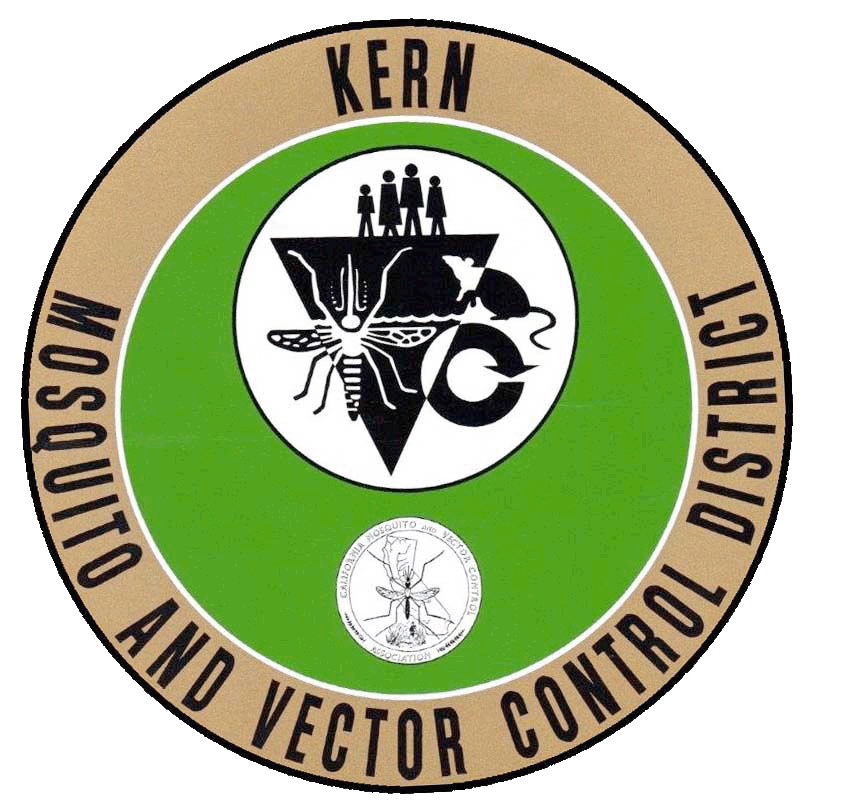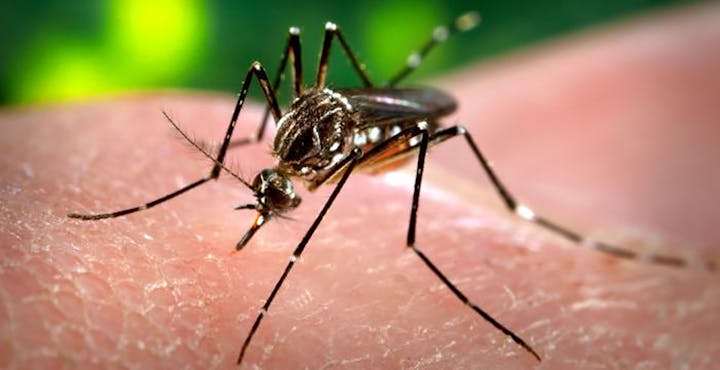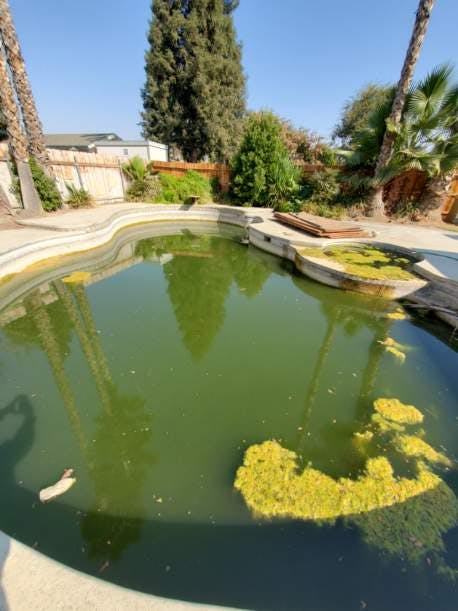How do we control mosquito populations at KMVCD?
Mosquito control season in the lower elevations of Kern County typically runs from April through October. During the peak mosquito months, we conduct chemical control (larvicide or adulticide application), biological control (using natural predators of mosquito), and mosquito breeding source reduction in neighborhoods of Arvin, Bakersfield, Buttonwillow, Lamont, Shafter, and Wasco. Appropriate training and proper personal protective equipment are required for adulticide and larvicide applications. The following section summarizes our use of larvicides, adulticides, and mosquito fish in the control of pesky mosquito populations.

1. Larvicides
Larvicides are chemicals that kill or inhibit the growth of insects in their larval stage. Mosquito larvicides are applied to standing water where larval and pupal life stages occur. Larvicides are mostly sold as surface film and bits, tablets, or dunks that slowly dissolve in water.
Most products we use in the field (example: Fourstar and Vectolex) contain Bacillus thuringiensis israelensis (Bti) and Bacillus sphaericus (Bs), which are naturally occurring bacteria that specifically target mosquito larvae. Spores of these bacteria produce toxins that damage the gut of mosquito larvae that ingest the bacteria or spores. The effectiveness of Bti and Bs is influenced by factors such as ingestion rate, age, and density of mosquito larvae, temperature, depth of water, turbidity, and presence of vegetation and organic matter. Bti products are available as bits and dunks for purchase at most garden centers and hardware and farm stores. It is important to follow safety procedures, listed on the product label when applying larvicides.
In addition to Bti and Bs, we use insect growth regulator products such as Altosid (methoprene) and Natular (spinosad) that interfere with normal metamorphosis or the life cycle of mosquitoes and prevent the larvae from emerging as adults – controlling mosquito bites and reproduction. All of our larvicides are applied to sources of standing water such as flower-pot saucers, containers, irrigation and roadside ditches, abandoned pools, floodwater, swamps, salt marshes, and storm water retention areas. However, these methods are not as effective in highly polluted water sources such as cattle waste lagoons. In those areas, we use larvicide/pupacide oils (example: CocoBear, BVA2) and monomolecular film (example: Agnique) that create a film on the water surface, which kill mosquito larvae and pupae by preventing their ability to breathe properly.
2. Adulticides
Adulticides are chemical sprays and fogging agents used above ground to kill adult mosquitoes. Adulticides need to be mixed at proper rates and proportions that are specified on product labels. Applying adulticides and some larvicides requires special equipment such as foggers and sprayers that are usually mounted on trucks. When needed, generally when our surveillance team identifies mosquitoes that could pose a threat to public health, the District applies adulticides by hand-foggers, backpack foggers, or vehicle-mounted foggers. Adulticide products we use commonly contain pyrethrins or pyrethroids.
Our district prefers to use larvicides over adulticides for the following reasons:
i. The larvicide products we use are less toxic to the environment and are specific to mosquitoes, meaning the impacts on non-target organisms such as bees, fish, birds, and mammals are minimized.
ii. Larvicide applications require the treatment of smaller areas, which saves time.
iii. Unlike adult mosquitoes that can fly and hide in difficult-to-reach places, larvae and pupae are dependent on water sources. So, treating specific water sources is more cost-effective and faster than fogging a whole property.
iv. Using larvicides kill mosquitoes before they are capable of transmitting diseases.
3. Mosquitofish (biological control)
Gambusia affinis, commonly known as “mosquito fish,” are natural predators of mosquito larvae and pupae. We use these fish to reduce mosquito populations in permanent and semi-permanent freshwater habitats that are not highly polluted, such as unmaintained swimming pools, livestock watering troughs, ornamental ponds, sumps, reservoirs, duck clubs, and ditches. Mosquito fish are related to the common guppy and are about ¼ inch to 3 inches in size. These fish are effective surface feeders and greedily feed on mosquito larvae and pupae. These fish can also grow and thrive in environments that might not be suitable for other fish. Notably, mosquito fish give live birth, unlike other fish, so do not require a special environment for egg deposition and development. Mosquito fish females are able to produce several broods of younglings (50-100 in a single brood) in their lifetime.
We provide mosquito fish to interested residents for FREE. If you have non-chlorinated, unmaintained pools, ponds, or similar water sources that remain undrained for an extended period, mosquito fish can be requested by calling our office at 661-589-2744 or by filling a request form online.























